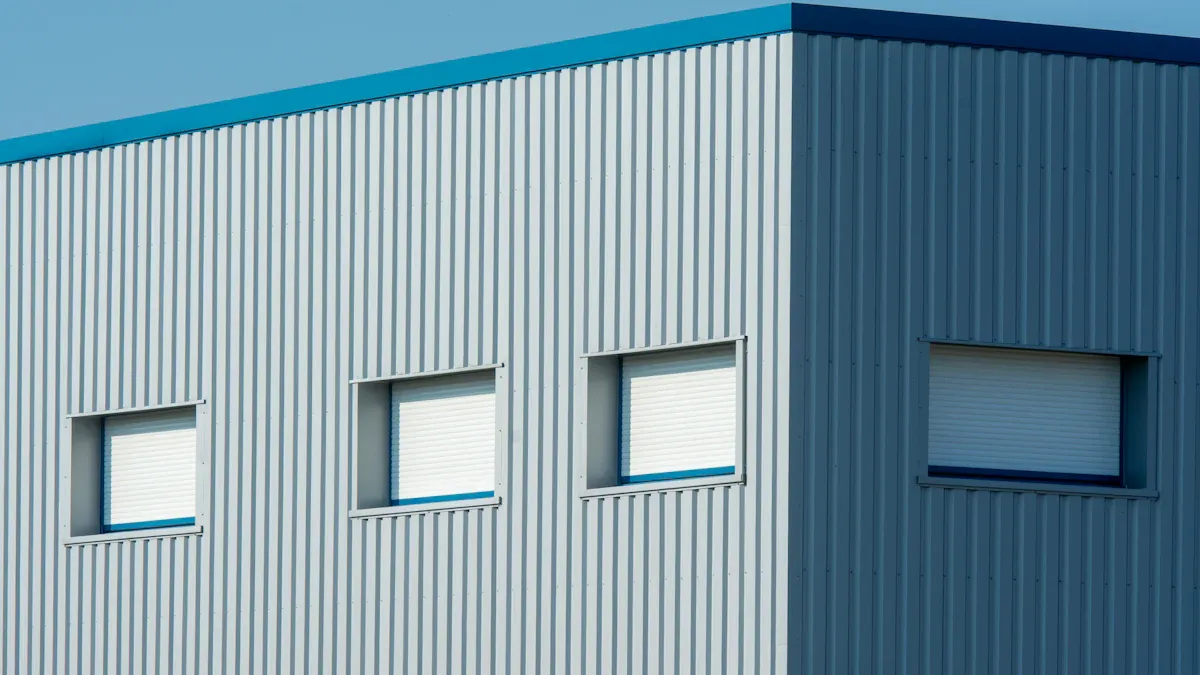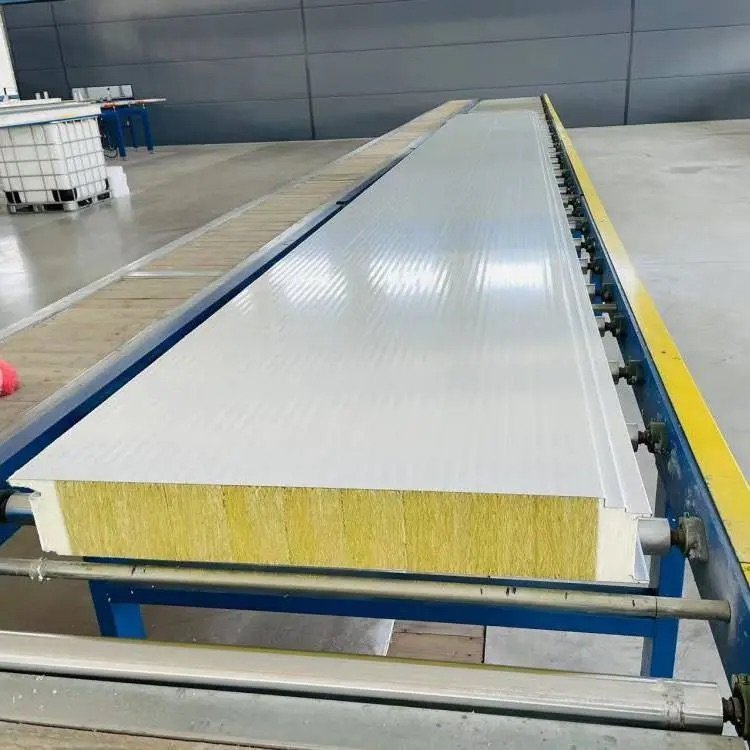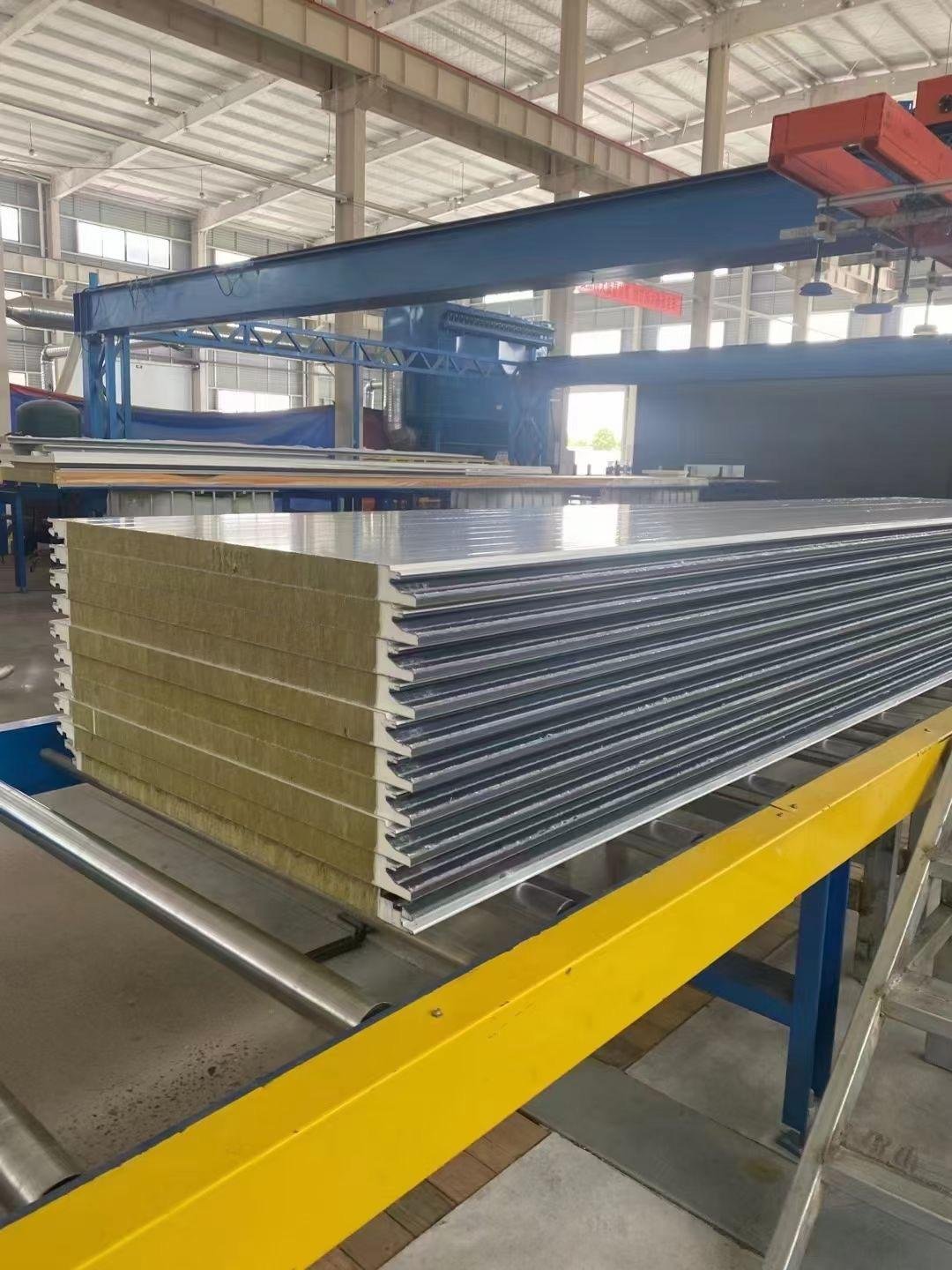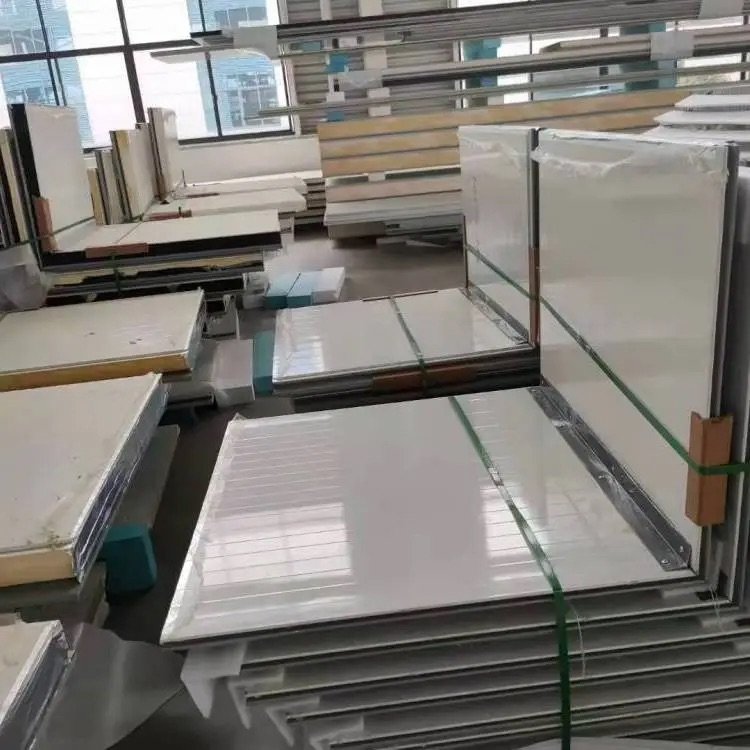
EPS core density means the weight of expanded polystyrene (EPS) in a set space. This feature affects how well a panel works in different uses. Panels with higher EPS density are stronger and last longer. These panels are great for holding heavy loads. EPS is also very good at saving energy. It keeps buildings warm or cool by stopping heat from passing through. Tests on EPS densities of 15 kg/m³, 19 kg/m³, and 21 kg/m³ showed that higher densities made panels stiffer and better at holding weight. EPS is still light, affordable, and doesn’t soak up water. This makes it a great choice for energy-saving buildings.
Key Takeaways
Thicker EPS cores make panels stronger to hold more weight. This makes them great for building projects.
Thicker EPS also keeps heat in or out better. This helps buildings use less energy and stay comfy, saving on heating and cooling bills.
Picking the right EPS thickness balances cost and use. Thicker EPS is stronger and insulates better, while thinner EPS costs less for easier jobs.
EPS Core Density and Panel Strength

How it affects strength and load support
The EPS core’s density decides how strong a panel is. Thicker EPS cores hold heavier weights better. This makes them perfect for strong building needs. Think of it as the panel’s backbone, keeping it sturdy. Research shows that denser EPS makes materials like EPS concrete stronger. For instance, Chen and Fang (2011) found that higher EPS density with less EPS volume made concrete much stronger.
Here’s a simple comparison from studies:
Study | Findings |
|---|---|
Chen and Fang (2011) | Higher EPS density and less EPS volume make concrete stronger. |
Schackow et al. (2014) | More EPS volume lowers density but improves heat resistance. |
Real et al. (2016) | Studied heat flow in lightweight concrete, linked to EPS density. |
This table shows how density changes panel strength, especially for heavy-duty uses.
Lasting in different weather conditions
EPS stays strong in many weather types. Its design stops it from soaking up water, which helps it last longer. Short tests, like ASTM C272’s 24-hour water soak, don’t show real-life results. Studies by Cai et al. and Connor prove that years of real-world use give better durability results.
Unlike other materials, EPS has tiny spaces that let water pass through. But this doesn’t hurt its ability to insulate. This makes EPS a good pick for panels in wet or changing climates. It stays strong and keeps heat in or out, even in tough weather.
EPS Insulation and Energy Efficiency

How density affects heat resistance
EPS density changes how well it blocks heat. Denser EPS stops heat better, helping buildings save energy. Think of EPS as a shield that slows heat movement. This keeps rooms cozy. Studies show adding EPS improves heat resistance a lot. For example:
Heat moves 54% slower with EPS, making insulation better.
Heat spreads 13% slower, so materials react slower to temperature.
Small EPS amounts raise heat capacity, improving insulation further.
These results show EPS density is key for better insulation. Picking the right density ensures top thermal performance.
How EPS lowers energy use
EPS insulation helps save energy. Its R-value, between 3.6 and 4.2 per inch, makes it great at stopping heat. This lowers heating and cooling costs. EPS keeps building temperatures steady, cutting energy use.
EPS insulation works well for a long time. It keeps saving energy throughout its life. This helps whole walls stay energy-efficient for years. Choosing EPS with higher R-values gives better insulation. It also reduces energy use, making it a smart and eco-friendly choice.
Cost Implications of EPS Core Density

Balancing material costs with performance benefits
When picking EPS for a project, think about cost and benefits. Denser EPS is stronger and insulates better but costs more. For example, higher-density EPS has a better R-value, which measures insulation. The table below shows how density affects R-values and costs:
EPS Density (lbs/ft³) | R-value at 75°F | R-value at 40°F | Cost Impact |
|---|---|---|---|
0.90 | 3.85 | 4.17 | Lower |
1.25 | ~4.0 | ~4.3 | Moderate |
1.5 | ~4.5 | ~4.5 | Higher |
Higher-density EPS insulates better but costs more. Sometimes, the extra cost isn’t worth it. For lighter uses, low-density EPS works well and costs less. For buildings needing strength and energy savings, denser EPS is worth the price.
Cost-effective density options for different applications
Choose EPS density based on your needs. For light tasks like packaging, low-density EPS is cheap and works fine. For construction, higher-density EPS is stronger and lasts longer. It’s great for walls, roofs, and saving energy.
Denser EPS saves energy over time by reducing heating and cooling costs. This can make up for its higher price. But if you don’t need top insulation or strength, medium-density EPS might be the best choice.
Tip: Think about your project’s insulation and energy needs before choosing EPS density. This helps you get the best value for your money.
Picking the Best EPS Core Density
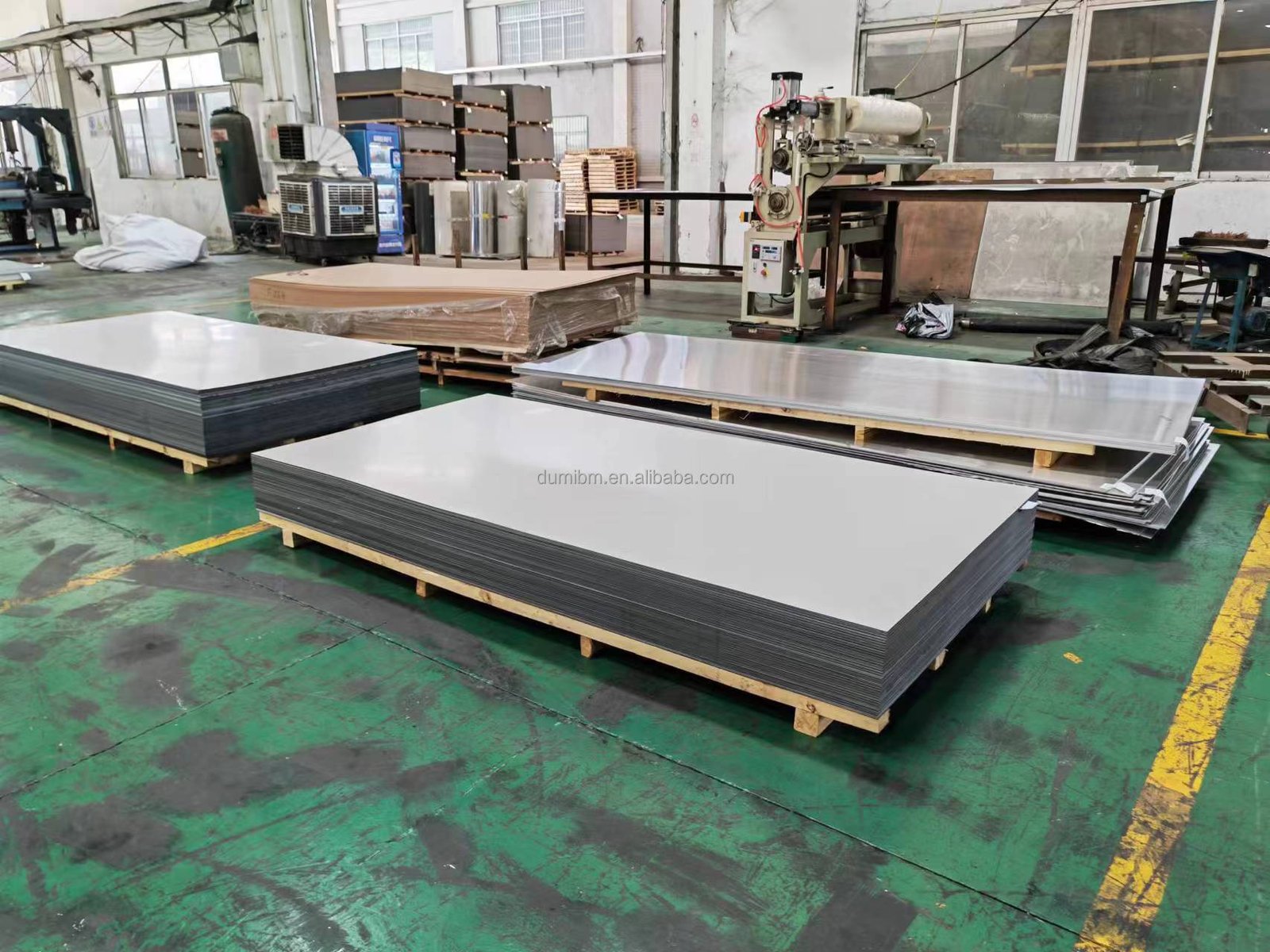
Things to think about for different uses
Choosing the right EPS core density depends on your project. Each job has its own needs, so knowing them helps you decide. For example, thicker EPS keeps heat in better, which is great for saving energy in buildings. It’s also stronger, making it good for walls and roofs. If your project is in a wet area, thicker EPS is better because it soaks up less water.
Here’s a simple table to guide you:
Feature | What It Means |
|---|---|
Heat Insulation | Thicker EPS keeps heat in better because it’s denser. |
Strength | Thicker EPS is stronger and can hold more weight. |
Shape Stability | Thicker EPS keeps its shape better in tough conditions. |
Impact Protection | Thicker EPS handles hits and stress better. |
Water Resistance | Thicker EPS soaks up less water, good for wet places. |
Cost vs. Value | Thicker EPS costs more but works better; thinner EPS is cheaper for easier jobs. |
By thinking about these points, you can pick EPS that fits your project’s needs for strength, insulation, and cost.
Balancing thickness, performance, and price
When picking EPS, think about how thickness, performance, and price match up. Thicker EPS saves energy and is stronger because of its higher R-value. It also lasts longer and stays sturdy. But, it costs more. If you’re on a budget, medium-thickness EPS might work well and cost less.
Thinner EPS is cheaper and works for jobs that don’t need much strength or insulation. For example, packaging often uses thinner EPS because it’s light and affordable. But for building projects, thicker EPS saves energy and lasts longer.
To choose the best one, think about what matters most for your project. If saving energy and having strong materials are key, thicker EPS is worth it. For simpler jobs, thinner EPS saves money and still works fine.
Tip: Always check the R-value, heat needs, and energy savings when picking EPS. This helps you get the best results for your project.
EPS core density is important for how panels work. Check how it affects strength, insulation, and durability. Denser EPS saves energy but costs more. Match your needs with your budget. Pick an EPS density that fits your project’s energy and strength needs.
FAQ
What is the best EPS density for building projects?
The right density depends on the job. For walls and roofs, thicker EPS (19-21 kg/m³) works better. It gives more strength and keeps heat in. Smaller tasks might need thinner EPS.
Does thicker EPS always work better?
Not every time. Thicker EPS is stronger and insulates well, but costs more. For easy jobs, thinner or medium EPS can do the job and save money.
How does EPS thickness help with water?
Thicker EPS doesn’t soak up much water. This makes it last longer in wet places. It still keeps heat in tough weather.
Tip: Pick EPS thickness based on your project’s needs for the best results.

